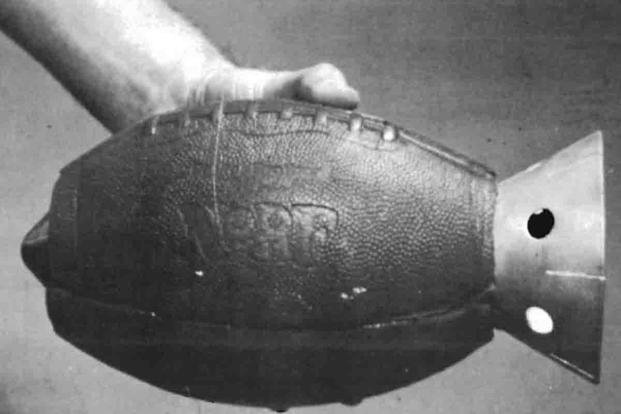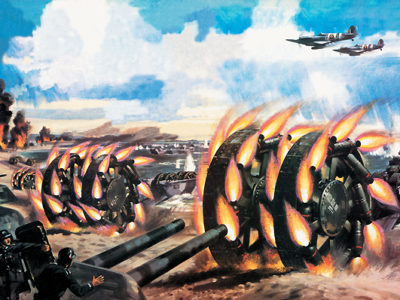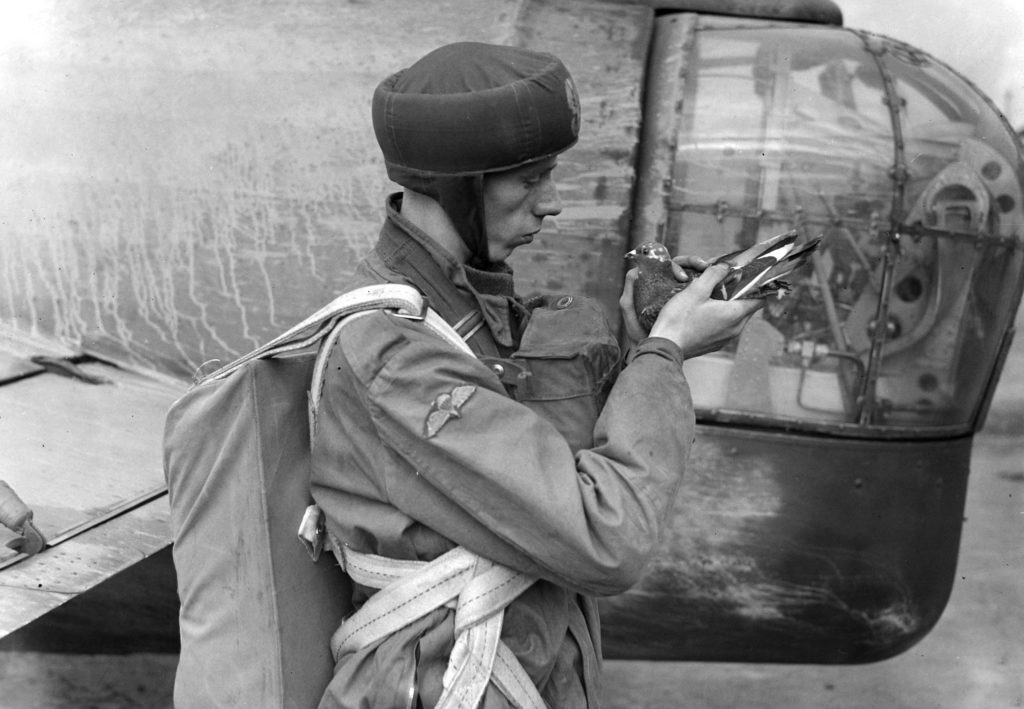If you’ve thrown a Nerf football, you can throw a grenade against invading Soviets.
At least, that’s what the U.S. Army thought in 1973 — and put that theory to the test.
Recommended for you
“At the start of the Cold War, NATO planners envisioned as many as 175 Soviet divisions advancing across Western Europe,” writes Blake Stilwell for Military.com. “In their mind, NATO troops would find themselves fighting the Red Army’s new T-62 tanks in cities and towns, populated areas where the collateral damage from anti-tank missiles could kill civilians.”
Close-quarters fighting called for close-quarter weaponry, and with that, the Army attempted to meld Americans’ love of football with combat.
The Army’s Land Warfare Laboratory at Aberdeen Proving Ground, Maryland was tasked with creating a football-shaped grenade.
But they quickly found out why the idea wasn’t going to fly.
“Since a regulation size football weighs 14 ounces, it was considered feasible to make a shaped charge grenade within this weight limitation. In addition, most US troops are familiar with throwing footballs,” according to the Army’s test report for the weapon.
So Army researchers simply hollowed out a Nerf football — yes, the foam balls you threw as a child — and placed explosives inside.
Ingenious, sure. Practical? Hardly.
Footballs fly through the air because there is an even distribution of weight surrounding the hollow inside of the ball. But 14 ounces of explosives tended to make the trajectory of the Nerf grenade “unpredictable,” according to the test report.
GET HISTORY’S GREATEST TALES—RIGHT IN YOUR INBOX
Subscribe to our HistoryNet Now! newsletter for the best of the past, delivered every Wednesday.
Army war planners had better luck taking inspiration from baseball. In 1968, as the Vietnam War was in full swing, the M-67 grenade — known as the baseball grenade — saw widespread use in the war.
Despite its ubiquitous use, current Army manuals make no mention of sports or balls when it comes to grenades. “Since few soldiers throw in the same manner, it is difficult to establish firm rules or techniques for throwing hand grenades,” one handbook points out.
“If a soldier can achieve more distance and accuracy using his own personal style, he should be allowed to do so as long as his body is facing sideways, towards the enemy’s position, and he throws basically overhand,” the document adds.








